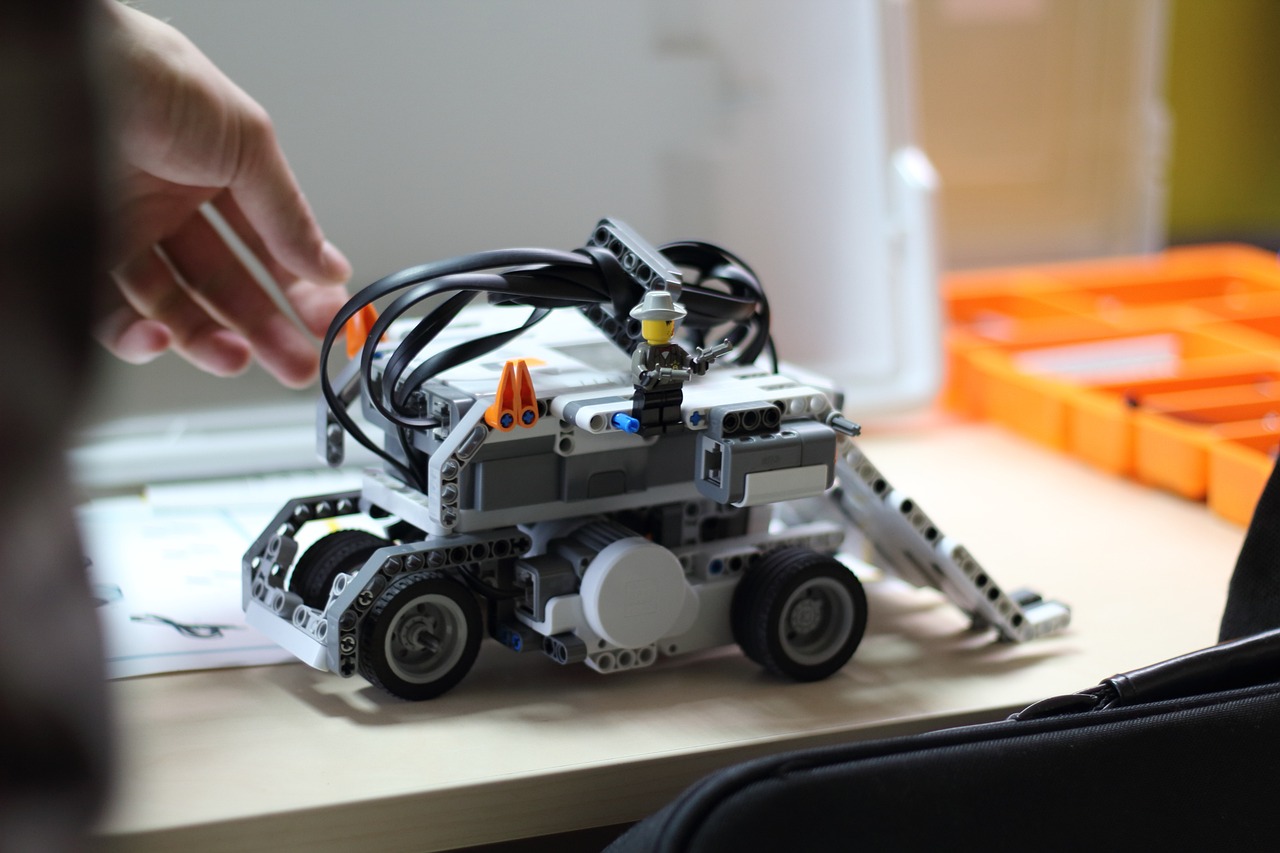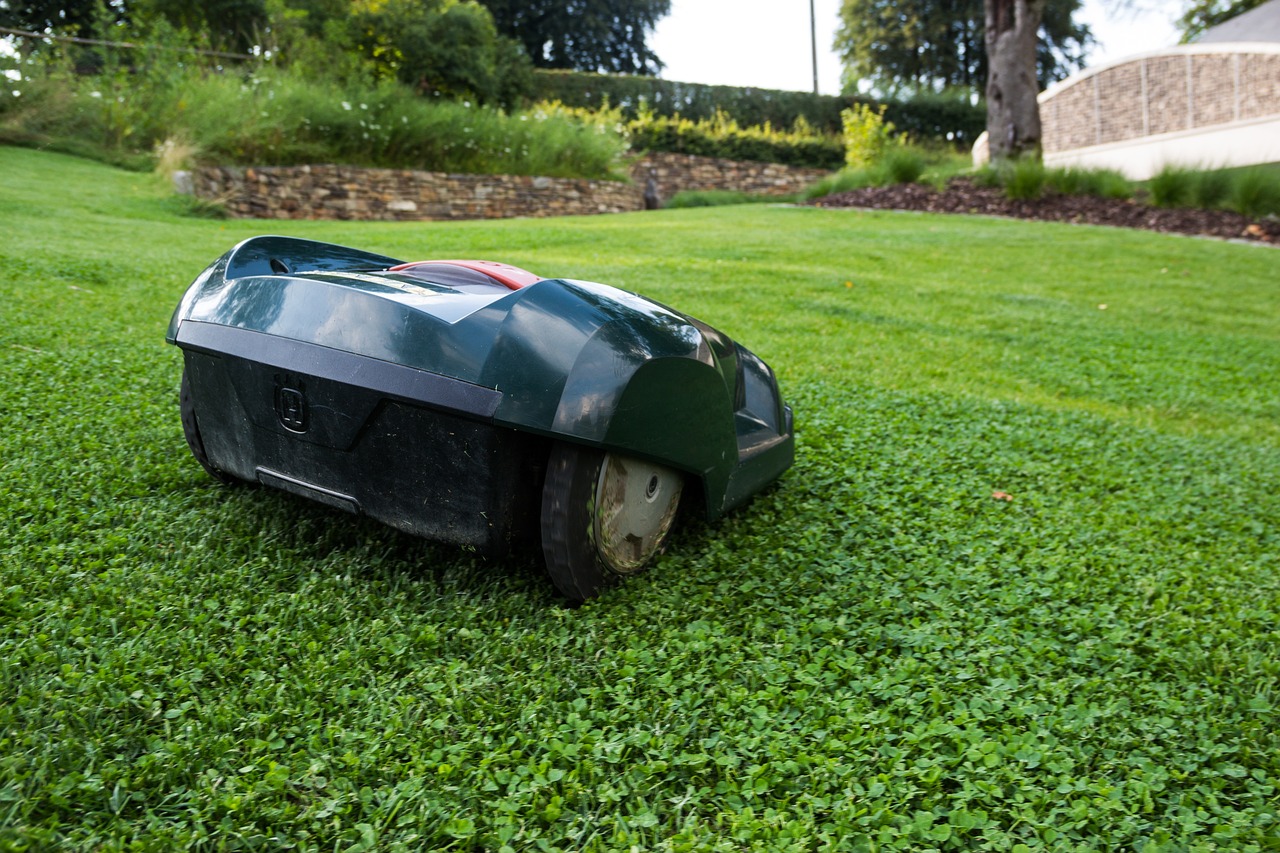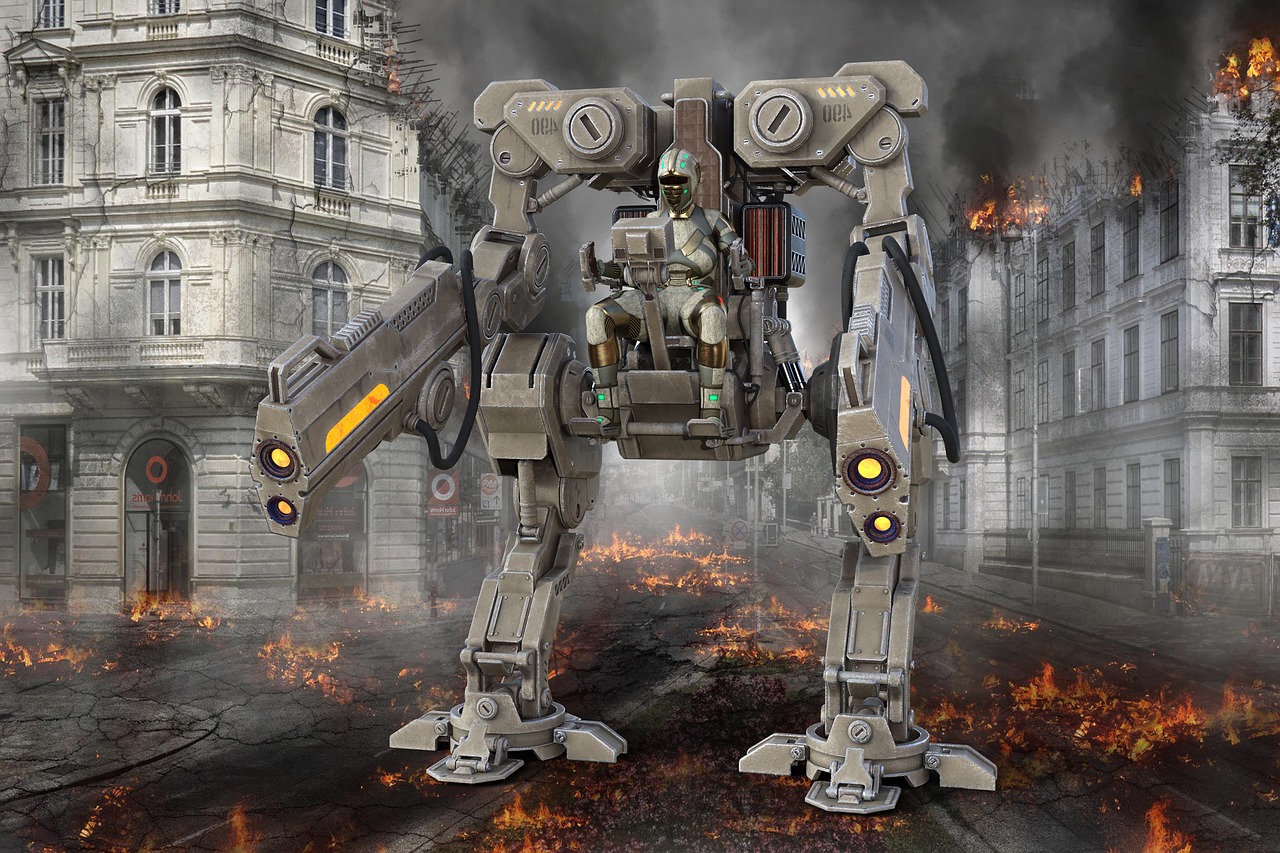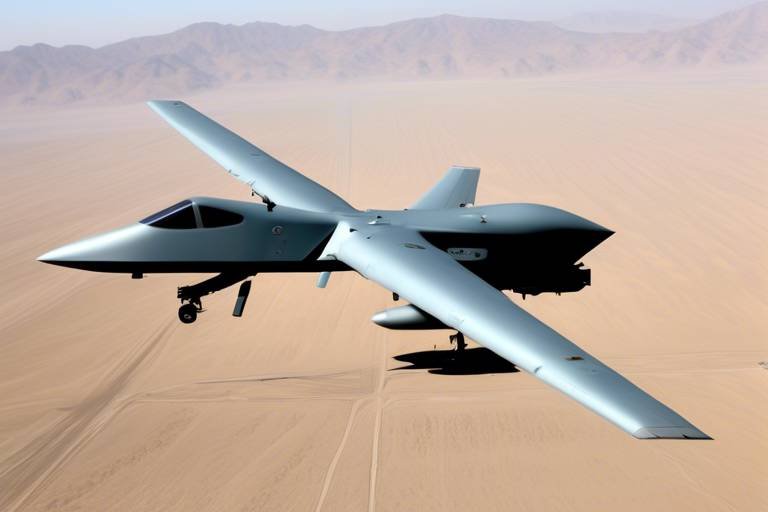How the EOD Robot is Transforming Hazardous Operations
In an era where technology is rapidly evolving, the role of EOD (Explosive Ordnance Disposal) robots has become paramount in hazardous operations. Imagine being able to tackle dangerous situations without putting human lives at risk; that's precisely what these incredible machines do. As we delve deeper into the world of EOD robots, it becomes clear that they are not just tools but rather, game-changers in the field of explosive disposal. Their ability to operate in perilous environments and manage explosive threats has revolutionized the way we approach safety and efficiency in hazardous operations.
Historically, the disposal of explosives was a high-risk endeavor, often requiring skilled personnel to work in close proximity to potential threats. However, with the advent of EOD robots, this paradigm has shifted dramatically. These robots are equipped with advanced technology that not only enhances their operational capabilities but also significantly reduces the risk to human lives. Imagine sending a robot to inspect a suspicious package instead of a person; it’s not just a safer option, but it also allows for a more controlled and calculated response to potential threats.
The transformation brought about by EOD robots is multifaceted. They are capable of navigating complex terrains, performing intricate tasks, and providing real-time data to operators, all while remaining at a safe distance from danger. This innovation is not merely about replacing human effort; it’s about enhancing the entire operational framework in explosive ordnance disposal. As we explore the evolution, features, and benefits of these robots, we gain insight into how they are reshaping the landscape of hazardous operations.
Initially, EOD robots were basic remote-controlled devices, often limited in their functionality and application. However, they have significantly evolved over the years. Today’s EOD robots are equipped with cutting-edge technology that enhances their effectiveness in hazardous environments. This evolution has been driven by the need for improved safety for operators during explosive disposal missions, as well as the demand for greater operational efficiency.
Modern EOD robots are designed with various features that set them apart from their predecessors. These include enhanced mobility, advanced sensors, and remote operation capabilities. Each of these features plays a crucial role in allowing EOD robots to navigate complex terrains and perform intricate tasks while minimizing human risk.
The ability of EOD robots to traverse challenging terrains is crucial for their effectiveness. Whether it’s navigating through urban landscapes or rugged terrains, mobility is a key feature that enhances their operational capabilities. Various mobility technologies, such as tracked and wheeled designs, allow these robots to adapt to different environments seamlessly.
Both tracked and wheeled EOD robots have unique advantages depending on the operational context. For instance, tracked robots are excellent for uneven surfaces, while wheeled robots are often faster on flat terrains. Understanding these differences can be pivotal in selecting the right robot for specific missions.
Remote operation is a fundamental feature of EOD robots, allowing operators to control them from a safe distance. This capability is vital in enhancing operator safety, as it minimizes human exposure to dangerous situations. The technology behind remote control has advanced significantly, incorporating features such as real-time video feeds and advanced communication systems.
Equipped with advanced sensors, EOD robots can detect explosives and assess threats with remarkable accuracy. These sensors play a critical role in improving the efficiency of explosive ordnance disposal operations. From infrared cameras to ground-penetrating radar, the types of sensors used are diverse and tailored to meet specific operational needs.
The integration of EOD robots into hazardous operations offers numerous benefits. Perhaps the most significant of these is the increased safety for personnel. By minimizing human exposure to dangerous situations, these robots allow for a safer working environment. Additionally, their use leads to enhanced operational efficiency and reduced response times, ultimately resulting in more successful missions in explosive disposal.
One of the primary advantages of EOD robots is the enhanced safety they provide for personnel. By taking on the most dangerous tasks, these robots allow human operators to remain at a safe distance, effectively reducing the risk of injury or loss of life. This shift not only protects lives but also boosts morale and confidence among teams involved in explosive disposal operations.
Beyond safety, EOD robots enhance operational efficiency. Their ability to perform tasks quickly and accurately can lead to significant cost savings and faster response times in critical situations. This efficiency benefits various stakeholders, from military organizations to civilian agencies, highlighting the broad applicability of EOD robots in hazardous operations.
- What are EOD robots used for? EOD robots are primarily used for identifying, disarming, and disposing of explosive devices safely.
- How do EOD robots operate? They are remotely controlled by operators who can monitor the robot's actions through real-time video feeds and data transmission.
- Are EOD robots safe to use? Yes, they are designed to minimize human exposure to dangerous situations, significantly enhancing safety in hazardous operations.
- What types of sensors do EOD robots have? EOD robots can be equipped with various sensors, including infrared cameras, chemical detectors, and ground-penetrating radar.

The Evolution of EOD Robots
The journey of Explosive Ordnance Disposal (EOD) robots has been nothing short of remarkable. Initially, these machines were merely basic remote-controlled devices, often limited in their capabilities and functionality. However, as technology has advanced, so too have the designs and applications of EOD robots. Today, they are sophisticated machines equipped with cutting-edge technology that significantly enhances their effectiveness in hazardous environments, ultimately improving safety for operators during explosive disposal missions.
In the early days, EOD robots were primarily used for simple tasks, such as moving suspicious objects or performing basic reconnaissance. Their limited mobility and rudimentary sensors often made them ineffective in complex scenarios. But as we moved into the 21st century, the demand for more reliable and versatile solutions grew, leading to a wave of innovations in robotics. The integration of artificial intelligence, advanced sensors, and improved mobility systems has transformed these machines into indispensable tools for military and civilian operations alike.
One of the most significant changes in the evolution of EOD robots has been their mobility and adaptability. Modern robots can navigate challenging terrains, from urban landscapes filled with obstacles to rugged and uneven ground. This is achieved through advanced mobility technologies such as tracked systems and articulated joints, which allow them to climb over debris and maneuver in tight spaces. The ability to traverse diverse environments not only enhances their operational capabilities but also ensures that they can safely and effectively engage with potential threats.
Moreover, the remote operation capabilities of EOD robots have been a game-changer. Operators can now control these machines from a safe distance, minimizing the risk of exposure to dangerous situations. This advancement relies on robust communication technologies, including secure wireless connections and real-time video feeds, which allow operators to assess situations accurately and make informed decisions. The ability to operate remotely is not just a technical enhancement; it represents a fundamental shift in how hazardous operations are conducted, prioritizing human safety while maximizing operational effectiveness.
As we look to the future, the evolution of EOD robots is set to continue. With ongoing advancements in robotics, artificial intelligence, and sensor technology, we can expect to see even more sophisticated machines that can handle increasingly complex tasks. The integration of machine learning algorithms will enable these robots to learn from past missions, improving their decision-making processes and operational efficiency. In essence, the evolution of EOD robots is a testament to the relentless pursuit of safety and efficiency in hazardous operations.
- What are EOD robots used for? EOD robots are primarily used to detect, disarm, and dispose of explosive ordnance safely, minimizing risk to human personnel.
- How have EOD robots changed over the years? They have evolved from basic remote-controlled devices to advanced machines with enhanced mobility, sensors, and remote operation capabilities.
- What are the safety benefits of using EOD robots? EOD robots significantly reduce human exposure to dangerous situations, allowing operators to control them from a safe distance.
- Can EOD robots operate in challenging terrains? Yes, modern EOD robots are designed to navigate a variety of terrains, including urban environments and rugged landscapes.

Key Features of Modern EOD Robots
Modern EOD robots are nothing short of technological marvels, designed to tackle the most dangerous tasks in explosive ordnance disposal with remarkable precision and efficiency. These robots are equipped with a variety of key features that set them apart from their predecessors, making them indispensable tools in hazardous operations. One of the most notable advancements is their enhanced mobility. Unlike earlier models that struggled to navigate complex terrains, today's EOD robots can traverse everything from urban landscapes to rugged wilderness with ease. This adaptability is crucial when operators must respond quickly to threats in unpredictable environments.
Another significant feature is the advanced sensor technology integrated into these machines. Equipped with high-definition cameras, thermal imaging, and chemical sensors, modern EOD robots can detect explosives and assess threats with unparalleled accuracy. These sensors allow operators to gather critical information from a safe distance, minimizing risk while maximizing situational awareness. For instance, thermal imaging can reveal hidden explosives that are not visible to the naked eye, making it a game-changer in the field.
Moreover, the remote operation capabilities of EOD robots have revolutionized how explosive ordnance disposal missions are conducted. Operators can control these robots from a secure location, often miles away from the hazardous site. This feature not only enhances safety but also allows for more strategic decision-making during operations. The technology behind remote operation includes advanced communication systems and real-time video feeds, ensuring that operators have all the information they need to make informed choices.
To illustrate the significance of these features, consider the following table that summarizes the key attributes of modern EOD robots:
| Feature | Description |
|---|---|
| Mobility | Ability to navigate diverse terrains, including urban and rugged landscapes. |
| Sensor Technology | Integration of cameras, thermal imaging, and chemical sensors for threat detection. |
| Remote Operation | Control from a safe distance, enhancing operator safety and decision-making. |
In addition to these features, modern EOD robots are also designed with durability and versatility in mind. They can withstand harsh environmental conditions, making them reliable assets in various scenarios. Whether it’s a bomb disposal in a crowded urban area or a military operation in a remote location, these robots are built to perform under pressure. Their versatility is further enhanced by the ability to attach different tools and equipment, allowing them to perform a range of tasks beyond just bomb disposal, such as reconnaissance and surveillance.
In summary, the key features of modern EOD robots not only enhance their operational effectiveness but also significantly improve safety for personnel involved in hazardous operations. With their advanced mobility, cutting-edge sensors, and remote operation capabilities, these robots are truly transforming the landscape of explosive ordnance disposal.
- What are EOD robots used for? EOD robots are primarily used for explosive ordnance disposal, helping to detect and neutralize explosive threats safely.
- How do EOD robots improve safety? By allowing operators to control them from a distance, EOD robots minimize human exposure to dangerous situations.
- Can EOD robots operate in all terrains? Yes, modern EOD robots are designed to navigate a variety of terrains, including urban, rural, and rugged landscapes.
- What types of sensors do EOD robots use? They use a combination of high-definition cameras, thermal imaging, and chemical sensors to detect explosives.

Mobility and Terrain Adaptability
The ability of EOD robots to navigate through various terrains is not just a perk; it's a game-changer in hazardous operations. Imagine trying to diffuse a bomb in a cluttered urban environment or on a rocky hillside. Without the right mobility, such missions could quickly turn perilous. Modern EOD robots are equipped with advanced mobility technologies that allow them to traverse everything from sandy deserts to muddy fields and even staircases in buildings. This adaptability is crucial for ensuring that operators can effectively carry out explosive ordnance disposal (EOD) tasks no matter where the threat lies.
When we talk about mobility, we're looking at two primary designs: tracked robots and wheeled robots. Each design has its own set of advantages tailored to specific operational needs. For instance, tracked robots excel in rough terrains where stability and grip are essential. Their low center of gravity and continuous tracks allow them to climb over obstacles and maintain traction on slippery surfaces. On the other hand, wheeled robots are typically faster and more efficient on flat surfaces, making them ideal for urban environments where speed is of the essence.
| Robot Type | Advantages | Best Use Cases |
|---|---|---|
| Tracked Robots | Superior stability, better grip on uneven surfaces | Rugged landscapes, disaster zones |
| Wheeled Robots | Higher speed, easier navigation on flat surfaces | Urban areas, quick response scenarios |
Additionally, the integration of artificial intelligence and machine learning into these robots enhances their ability to adapt to different terrains. For example, AI can analyze the environment in real-time and make decisions about the best path to take, avoiding obstacles and identifying safe routes. This level of adaptability not only increases the chances of successful missions but also significantly reduces the risk to human operators.
In conclusion, the mobility and terrain adaptability of EOD robots are fundamental to their effectiveness in hazardous operations. By leveraging advanced technologies and design features, these robots can safely navigate challenging environments, making them indispensable tools for explosive ordnance disposal teams. Whether it’s climbing over debris or racing through urban streets, their ability to maneuver effectively is a key factor in enhancing safety and operational success.
- What types of terrains can EOD robots operate in?
EOD robots can operate in a variety of terrains, including urban areas, rugged landscapes, sandy deserts, and more, thanks to their advanced mobility features. - How do tracked and wheeled robots differ in performance?
Tracked robots provide better stability and grip on uneven surfaces, while wheeled robots are faster and more efficient on flat terrains. - Can EOD robots make autonomous decisions?
Yes, many modern EOD robots use artificial intelligence to analyze their surroundings and make real-time decisions to enhance their operational effectiveness.

Tracked vs. Wheeled Robots
When it comes to EOD robots, the choice between tracked and wheeled designs can be as critical as selecting the right tool for a specific job. Imagine you're a surgeon; the precision of your instruments can make all the difference in a successful operation. Similarly, the configuration of EOD robots significantly impacts their effectiveness in hazardous environments. Tracked robots, with their robust, continuous tracks, excel in navigating rough terrains, such as rubble-strewn urban landscapes or uneven outdoor settings. Their design allows for superior stability and traction, making them less likely to tip over or get stuck in challenging conditions.
On the other hand, wheeled robots are often favored for their speed and agility. Picture a sports car zipping through a city versus a tank lumbering along; each has its place depending on the situation. Wheeled EOD robots can cover ground quickly and are typically lighter, which makes them easier to transport and deploy. However, they might struggle in more rugged environments where obstacles are prevalent. This is where the decision between tracked and wheeled robots becomes a matter of mission requirements.
To illustrate the differences further, consider the following table that summarizes the key features and suitable applications of both types of robots:
| Feature | Tracked Robots | Wheeled Robots |
|---|---|---|
| Terrain Adaptability | Excellent in rough and uneven terrains | Best for smooth surfaces and urban environments |
| Speed | Slower, but stable | Faster, but less stable on rough terrain |
| Weight | Heavier, more durable | Lighter, easier to transport |
| Cost | Generally more expensive due to complexity | Usually less expensive and simpler |
Ultimately, the decision between tracked and wheeled EOD robots hinges on the specific mission requirements, including the terrain, the nature of the threat, and the operational goals. As technology continues to advance, we may see hybrid models that combine the best features of both designs, further enhancing the capabilities of EOD robots in hazardous operations.
- What are EOD robots? EOD robots are specialized machines designed to handle explosive ordnance disposal, minimizing human risk during dangerous operations.
- How do tracked robots differ from wheeled robots? Tracked robots provide better stability and adaptability in rough terrains, while wheeled robots offer speed and agility on smooth surfaces.
- Can EOD robots operate in urban environments? Yes, both tracked and wheeled EOD robots can be effectively used in urban settings, but the choice depends on the specific challenges of the terrain.
- What are the main benefits of using EOD robots? The primary benefits include increased safety for personnel, enhanced operational efficiency, and reduced response times in explosive disposal missions.

Remote Operation Capabilities
The advent of remote operation capabilities has truly revolutionized the way EOD robots function in hazardous environments. Imagine being able to control a sophisticated machine from a safe distance, effectively eliminating the risks associated with explosive ordnance disposal. This ability not only enhances the safety of the operators but also allows for more precise and deliberate actions in high-stakes scenarios.
At the heart of this technology lies a robust communication system that ensures seamless interaction between the operator and the robot. Typically, these systems utilize a combination of radio frequencies and Wi-Fi networks, which provide a reliable link even in challenging conditions. The integration of advanced video feeds and sensor data allows operators to make informed decisions in real-time, akin to playing a video game where every move counts, but with far more at stake.
Moreover, the remote operation capabilities are designed to be user-friendly, empowering operators with intuitive controls that require minimal training. This is crucial in emergency situations where time is of the essence. The interface often includes joystick controls, touchscreen displays, and even augmented reality (AR) features that provide operators with a comprehensive view of the robot's surroundings. Such advancements make it possible to navigate through complex environments, whether it’s a crowded urban area or a remote battlefield, ensuring that the EOD mission is executed with precision.
One of the most remarkable aspects of remote operation is the ability to conduct teleoperation over long distances. Operators can control EOD robots from miles away, using secure connections that minimize the risk of interference. This capability is particularly valuable in situations where explosive threats are imminent, allowing for quick deployment without putting personnel in harm’s way. The following table summarizes the key components that contribute to effective remote operation:
| Component | Description |
|---|---|
| Control Interface | User-friendly systems such as joysticks and touchscreens for easy navigation. |
| Communication System | Utilizes radio frequencies and Wi-Fi for reliable connectivity. |
| Video Feed | Real-time visual feedback to enhance situational awareness. |
| Sensor Integration | Advanced sensors provide critical data for decision-making. |
In conclusion, the remote operation capabilities of EOD robots not only enhance the safety of personnel but also improve the overall effectiveness of explosive ordnance disposal missions. By enabling operators to control robots from a safe distance, these technologies are paving the way for a future where hazardous operations can be conducted with unprecedented efficiency and precision.
- How far can EOD robots be operated remotely? Most EOD robots can be controlled from several miles away, depending on the communication technology used.
- What kind of training is required to operate EOD robots? Operators typically undergo training that focuses on the robot's control interface and safety protocols.
- Can EOD robots work in adverse weather conditions? Yes, many modern EOD robots are designed to function effectively in various weather conditions, including rain and snow.

Advanced Sensor Technologies
In the realm of explosive ordnance disposal (EOD), the integration of has transformed the capabilities of robots, enabling them to detect explosives with remarkable precision. These sensors are akin to the robots' "noses," allowing them to sniff out danger in environments that are often too perilous for human operators. Imagine sending a robot into a potential minefield, equipped with sensors that can identify various types of explosives, assess their threat levels, and relay that information back to the operators in real-time. This technological leap not only enhances safety but also significantly improves the efficiency of disposal operations.
Modern EOD robots are typically outfitted with a variety of sensors, each serving a unique purpose in threat detection and assessment. Some of the most common types of sensors include:
- Infrared Sensors: These sensors detect heat signatures, allowing robots to identify explosive devices that may be camouflaged or concealed in their surroundings.
- Metal Detectors: A staple in EOD operations, metal detectors help locate metallic components of explosive devices, providing crucial information about their presence.
- Chemical Sensors: These sensors can detect specific chemical signatures associated with explosives, making it easier to identify threats even when they are buried or hidden.
- Radar Systems: Ground-penetrating radar can be employed to scan below the surface, revealing buried explosives or other hazardous materials.
By combining data from these various sensors, EOD robots can create a comprehensive picture of their environment. This capability is vital for making informed decisions during operations. For instance, if a robot detects a suspicious object using its metal detector, it can then use infrared sensors to assess whether the object is hot, indicating recent activity, or chemical sensors to determine if it contains explosive materials. This multi-faceted approach reduces the likelihood of false positives and ensures that operators are only dealing with genuine threats.
The data gathered by these sensors is transmitted back to the operators in real-time, allowing for quick analysis and decision-making. This immediacy is crucial, particularly in high-stakes situations where every second counts. For example, during a bomb threat, having access to real-time sensor data can mean the difference between a successful resolution and a catastrophic event.
Moreover, as technology continues to advance, we can expect even more sophisticated sensors to emerge. Innovations such as AI-driven analytics and machine learning algorithms are poised to revolutionize the way EOD robots interpret sensor data. By enabling robots to learn from past encounters and adapt their responses accordingly, future EOD operations could become even more efficient and safer.
- What are EOD robots? EOD robots are specialized machines designed to assist in the detection and disposal of explosive ordnance, minimizing human risk during hazardous operations.
- How do advanced sensors improve EOD operations? Advanced sensors enhance EOD operations by providing accurate detection of explosives, allowing for real-time analysis and decision-making, ultimately increasing safety and efficiency.
- What types of sensors are commonly used in EOD robots? Common sensors include infrared sensors, metal detectors, chemical sensors, and ground-penetrating radar.
- Can EOD robots operate in various terrains? Yes, modern EOD robots are designed with mobility features that allow them to navigate diverse environments, from urban settings to rugged landscapes.

Benefits of Using EOD Robots
The integration of EOD robots into hazardous operations offers a multitude of benefits that are transforming the landscape of explosive ordnance disposal (EOD). One of the most compelling advantages is the significant increase in safety for personnel involved in these high-risk missions. Traditionally, bomb disposal tasks required human operators to be in close proximity to potentially deadly explosives. However, with the advent of EOD robots, operators can now control these machines from a safe distance, effectively minimizing their exposure to danger. Imagine being able to send a robot into a volatile situation while you remain in a secure location; this is the reality that EOD technology provides.
Moreover, the operational efficiency of missions has seen a remarkable boost with the use of EOD robots. These machines can perform tasks that would take human teams considerably longer to accomplish. For instance, the speed at which EOD robots can identify and neutralize threats can drastically reduce response times during critical situations. This efficiency not only enhances the likelihood of successful missions but also translates into significant cost savings for organizations involved in bomb disposal. By utilizing EOD robots, agencies can allocate resources more effectively and reduce the financial burden associated with lengthy operations.
Another key benefit is the reduction of psychological stress on personnel. The nature of bomb disposal work is inherently stressful, often placing operators in life-or-death situations. By employing EOD robots, the pressure on human operators is alleviated. They can monitor and control the robots from a distance, allowing them to focus on strategic decision-making rather than the immediate dangers present in the field. This shift not only improves the mental well-being of personnel but also enhances their performance during missions.
Furthermore, the versatility of EOD robots cannot be overlooked. These machines are equipped with advanced sensors and tools that allow them to adapt to various operational environments. Whether navigating through dense urban areas or traversing rugged terrains, EOD robots are designed to handle diverse challenges. Their ability to operate in multiple scenarios ensures that they can be deployed in a wide array of missions, making them invaluable assets in explosive ordnance disposal.
In conclusion, the benefits of using EOD robots extend far beyond mere convenience. They represent a significant leap forward in ensuring safety, efficiency, and effectiveness in hazardous operations. As technology continues to evolve, the role of EOD robots will only become more prominent, paving the way for safer and more efficient explosive ordnance disposal practices.
- What are EOD robots used for?
EOD robots are primarily used for detecting, disarming, and disposing of explosive ordnance in hazardous environments, ensuring the safety of personnel. - How do EOD robots enhance safety?
By allowing operators to control the robots from a safe distance, EOD robots reduce the risk of human exposure to dangerous situations during bomb disposal operations. - What types of sensors do EOD robots use?
EOD robots are equipped with advanced sensors, including infrared cameras, ground-penetrating radar, and chemical detectors, to identify and assess explosive threats. - Are EOD robots cost-effective?
Yes, their use leads to significant cost savings by improving operational efficiency and reducing the time required for bomb disposal missions.

Increased Safety for Personnel
When it comes to hazardous operations, particularly in explosive ordnance disposal (EOD), the safety of personnel is paramount. EOD robots are revolutionizing how these dangerous tasks are approached, significantly reducing the risks faced by human operators. Imagine being able to send a highly capable machine into a potentially deadly situation instead of putting a person in harm's way. This is not just a dream; it's a reality thanks to the advancements in robotic technology.
The primary role of EOD robots is to act as a shield between hazardous explosives and the personnel who would traditionally handle them. By utilizing these robots, operators can maintain a safe distance while still effectively managing the situation. For instance, when a bomb threat is reported, instead of sending a team of specialists into a potentially explosive environment, authorities can deploy a robot equipped with advanced sensors and tools. This not only minimizes human exposure to danger but also enhances the overall effectiveness of the operation.
Moreover, the integration of EOD robots into hazardous environments allows for real-time data transmission back to the operators. These machines can relay crucial information about the nature of the threat, the environment, and the status of the operation. This means that operators can make informed decisions without ever stepping foot into a risky area. The psychological comfort of knowing that a robot is handling the dangerous tasks can also reduce stress levels for the personnel involved, allowing them to focus on coordination and strategy rather than worrying about their safety.
One of the key features contributing to the increased safety of personnel is the robot's ability to perform complex tasks remotely. For example, EOD robots can be equipped with robotic arms that can manipulate objects, disarm explosives, and even conduct surveillance. This capability is crucial when dealing with intricate devices that require precision and care. The robots' dexterity means that they can handle items that would be too risky for a human to touch, thus further reducing the chances of accidents or injuries.
In addition to enhancing safety, EOD robots also contribute to a more efficient response to threats. By allowing for quick deployment and operation in various settings, these robots help to streamline the entire process of explosive disposal. For example, consider a scenario where a suspicious package is discovered in a crowded area. The rapid deployment of an EOD robot can quickly assess the situation, ensuring that the area is secured while keeping the public and first responders out of harm's way. This swift action not only saves lives but also prevents potential panic and chaos.
Ultimately, the use of EOD robots represents a significant leap forward in safety protocols for hazardous operations. They serve as a testament to how technology can be harnessed to protect human life while effectively managing dangerous situations. As these robots continue to evolve and improve, their role in ensuring the safety of personnel will undoubtedly expand, making them an indispensable asset in the field of explosive ordnance disposal.
- How do EOD robots enhance safety for personnel?
EOD robots minimize human exposure to dangerous situations by performing tasks remotely, allowing operators to maintain a safe distance. - What types of tasks can EOD robots perform?
They can manipulate objects, disarm explosives, conduct surveillance, and relay real-time data back to operators. - Are EOD robots effective in various environments?
Yes, modern EOD robots are designed to operate in diverse terrains, from urban settings to rugged landscapes. - How do EOD robots improve operational efficiency?
By enabling quick deployment and remote operation, EOD robots streamline the explosive disposal process, leading to faster response times.

Operational Efficiency and Cost Savings
The integration of EOD robots into hazardous operations has proven to be a game-changer, particularly when it comes to operational efficiency and cost savings. In an era where every second counts and resources are often stretched thin, these advanced machines not only save lives but also streamline processes that would traditionally require extensive manpower and time. Imagine a scenario where a bomb threat is reported in a crowded area; the deployment of an EOD robot can significantly reduce the time it takes to assess and neutralize the threat, allowing for a quicker return to normalcy.
One of the most significant advantages of using EOD robots is their ability to operate in environments that would be perilous for human personnel. This capability translates into fewer personnel being put at risk, which is invaluable. For instance, during a recent operation in a densely populated urban area, the use of EOD robots allowed teams to safely neutralize explosives without evacuating the surrounding buildings, thus minimizing disruption and maintaining public safety. The time saved in such operations directly correlates to cost savings, as resources can be allocated more effectively.
Moreover, the operational efficiency brought by these robots is not just about speed; it also encompasses accuracy and precision in handling explosives. With advanced sensor technologies, EOD robots can accurately identify threats and assess the situation before any action is taken. This reduces the likelihood of costly mistakes, which can arise from human error in high-stress situations. In fact, studies have shown that the use of EOD robots can reduce the average response time by up to 30%, leading to quicker resolutions and less financial burden on emergency services.
To illustrate the impact of EOD robots on operational costs, consider the following table:
| Operation Type | Traditional Method Cost | EOD Robot Method Cost | Cost Savings |
|---|---|---|---|
| Urban Bomb Disposal | $50,000 | $30,000 | $20,000 |
| Rural Explosive Assessment | $40,000 | $25,000 | $15,000 |
| Training and Preparation | $20,000 | $10,000 | $10,000 |
As seen in the table, the financial implications of utilizing EOD robots are substantial. The cost savings are not limited to immediate operations; they also extend to long-term benefits such as reduced training expenses and lower insurance premiums due to fewer incidents. This means that agencies can reallocate funds to other critical areas, enhancing overall public safety.
In summary, the operational efficiency and cost savings provided by EOD robots are transforming the landscape of hazardous operations. They not only enhance safety for personnel but also ensure that resources are utilized effectively, leading to faster response times and significant financial savings. As technology continues to advance, the potential for these robots to further improve efficiency and reduce costs will only grow, making them an indispensable asset in explosive ordnance disposal.
- What are EOD robots used for?
EOD robots are primarily used for explosive ordnance disposal, allowing operators to safely assess and neutralize threats without putting human lives at risk. - How do EOD robots enhance safety?
They minimize human exposure to dangerous situations by performing tasks remotely, ensuring that personnel are kept at a safe distance from potential threats. - What types of sensors do EOD robots use?
EOD robots utilize a variety of sensors, including cameras, thermal imaging, and chemical detectors, to accurately identify and assess explosive threats. - Are EOD robots expensive to deploy?
While the initial investment can be significant, the long-term cost savings and increased operational efficiency often justify the expense.
Frequently Asked Questions
- What are EOD robots and how do they work?
EOD robots, or Explosive Ordnance Disposal robots, are specialized machines designed to safely detect, disarm, and dispose of explosive threats. They operate remotely, allowing trained personnel to control them from a safe distance, significantly reducing the risk of injury or death during hazardous operations.
- What are the main advantages of using EOD robots?
The use of EOD robots offers numerous benefits, including increased safety for personnel, improved operational efficiency, and reduced response times. By minimizing human exposure to dangerous situations, these robots enhance mission success rates and save lives.
- How have EOD robots evolved over time?
EOD robots have come a long way from their early days as simple remote-controlled devices. Today, they are equipped with advanced technologies such as enhanced mobility systems, sophisticated sensors, and remote operation capabilities, making them far more effective in complex and hazardous environments.
- What types of sensors do EOD robots use?
Modern EOD robots utilize a variety of advanced sensors to detect explosives and assess threats. These can include infrared sensors, ground-penetrating radar, and chemical detection devices, all of which work together to improve the accuracy and efficiency of explosive ordnance disposal operations.
- Are EOD robots suitable for all terrains?
Yes, EOD robots are designed to operate in diverse environments, from urban settings to rugged landscapes. Their mobility technologies, whether tracked or wheeled, enable them to navigate challenging terrains effectively, ensuring they can perform their tasks in various operational contexts.
- How do remote operation capabilities enhance safety?
Remote operation capabilities allow operators to control EOD robots from a safe distance, keeping them out of harm's way during potentially dangerous missions. This technology is crucial for minimizing human exposure to explosive threats while still achieving mission objectives.
- Can EOD robots help reduce operational costs?
Absolutely! By improving safety and efficiency, EOD robots can lead to significant cost savings. Their ability to respond quickly to threats and carry out complex tasks reduces the time and resources needed for explosive disposal operations, benefiting various stakeholders involved.



















